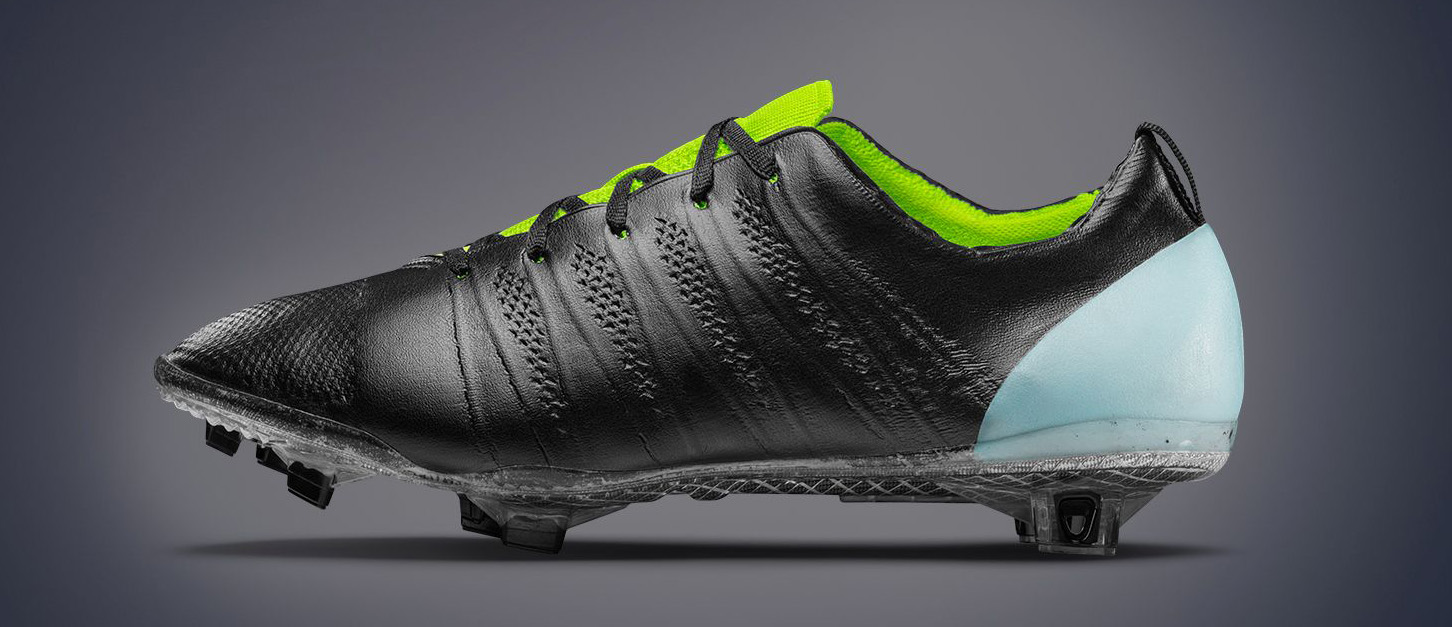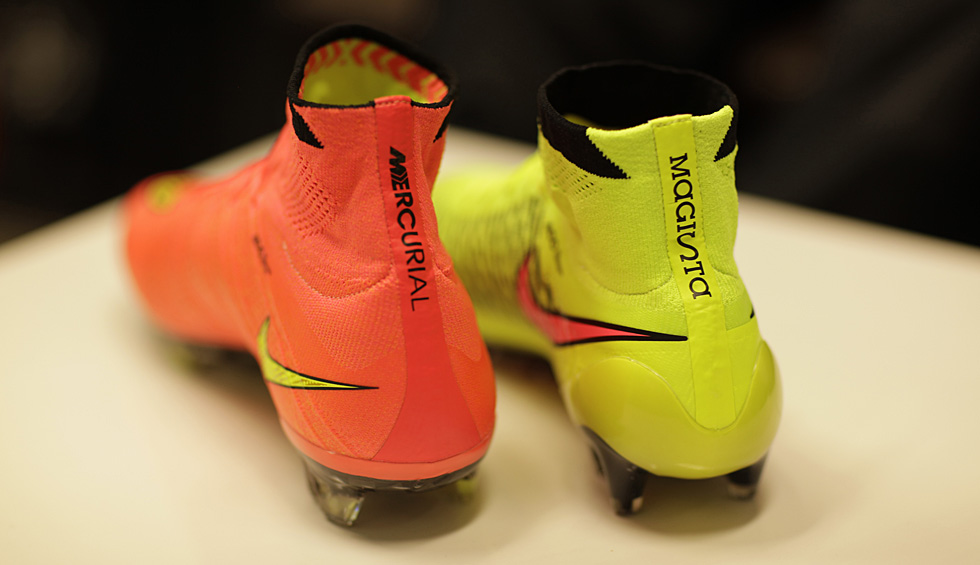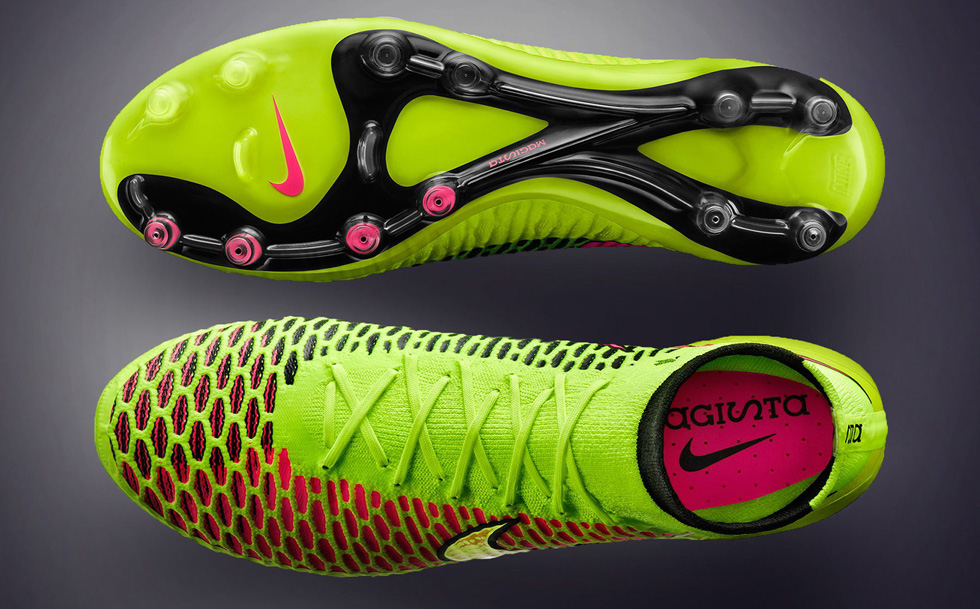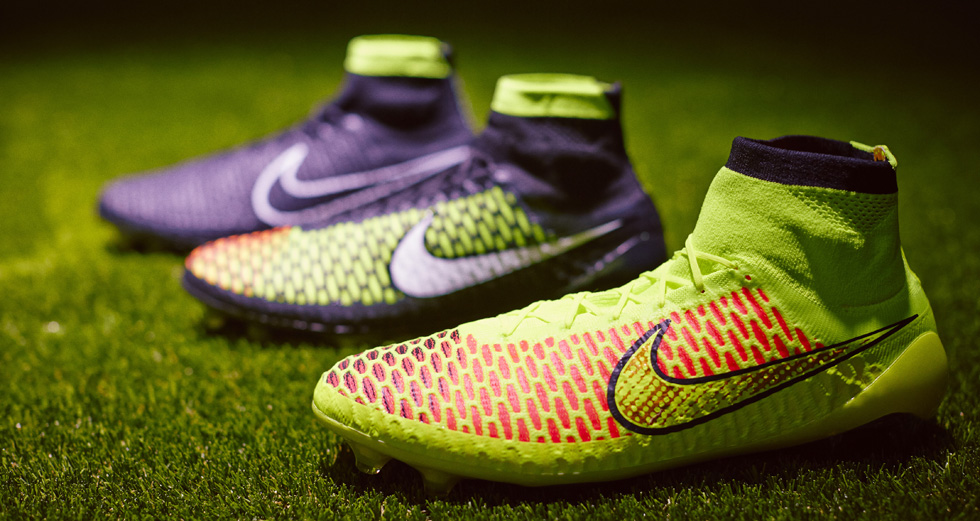
words & interview // Nick DePaula
portraits // Yulia Nidbalskaya
Throughout Nike's history of footwear, you can always point to a few milestones in design and innovation that have moved the needle and helped to set a new direction for where the industry was headed.
Air Jordan III. Air Max 1. Air Jordan XI. Foamposite. Huarache 2K4. Hyperdunk.
The models that have mattered have been rather endless for the Swoosh in just the past two decades alone -- extending far beyond just the above mentioned pairs.
As Nike Football [Soccer] prepares for the kickoff of this year's World Cup this afternoon, they're hoping to add to that brand legacy of innovation with yet another design milestone of their own.
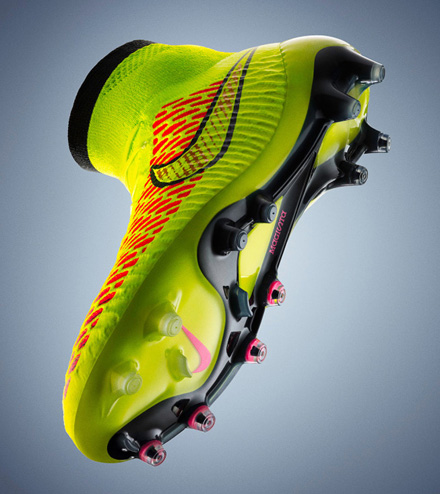
Cleats have often followed a similar form and pattern over the last decade, as the big innovation was the move away from leather and into synthetics, with the goal of getting closer to the foot and providing a better feel and touch with the ball.
With the advent of Flyknit, Nike Football is hoping to make a new leap in the realm of fit for players of all positions, with their new fully knitted Magista and Mercurial Superfly boots. Of course, brands can always simply claim to have revolutionized their sports, and walk away from a press event without anyone checking them on it.
So I did my own research, reading through an endless amount of performance reviews from seasoned writers, amateur bloggers and athletes who all play the game regularly. The Magista, Portuguese for "Magician" and worn by the field's distributors, was universally renowned and praised for having a fit and touch unlike any other boot before it.
As the two boots break convention in both construction and silhouette (and as always -- color), we spoke with Nike Football's Design Director Denis Dekovic to get a full breakdown on the initial starting points, insights along the way and design process.
Nick DePaula: Can you start out by talking about your background at Nike, and your current role now within the brand?
Denis Dekovic: I've been with Nike since 2005, and I worked with Women's Training before Football, where I've now been for the past three and a half years as the Design Director.
NDP: You were basically brought to the Nike Football category right after the ending of the last World Cup. What were the earliest things that you looked to get a grasp of in your new role?
DD: I joined Football in September of 2010, so two months after the World Cup had ended. We had a new team in place, and at that point, we were already looking ahead to Brazil. We knew it was a huge opportunity, and finally Nike and Brazil are coming together, hand in hand. It's a great relationship that started in 1994, and this great opportunity meant big things for us.
So, we knew already that it would be big, but we still started by traveling around the world and meeting players. Since we had a new team in place, we really wanted to understand what was going on. How is the game changing? These new insights really highlighted the need to change things.
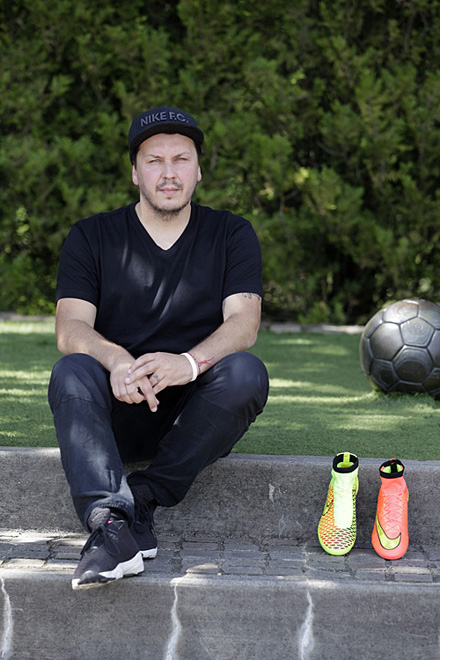
NDP: What were some of the things from players that stood out that they were looking for the most, and how did that influence the design?
DD: The game was becoming different, and our first conversations with players were not about product. It was just about football. How do you play? What's going on? What makes the difference between a great player and a good player? It's understanding those things that changes everything. It's all about the game, and the game was changing and was faster. Players are physically faster and mentally faster.
They would say, “Great players, they already know what's going to happen when they get the ball. A good player, when he gets the ball, then he decides.” The great player is two steps ahead all the time. The players are also fitter. In the past, you used to have bigger players with big legs. Today, they're more slimmer than they used to be, and the agility, stamina and everything changes. The speed of the game has changed.
NDP: How did that start to affect your overall look at design and construction as you began to look at the broad direction of the cleats?
DD: One big thing for us was the idea of designing for the player's body, and not just for the foot alone. The body is like a kinetic chain, and it's one unit. We tend to split it in parts, like, “This is the hand, and this is the arm.” But really, it's just one big unibody. We knew that we had to design for the body and not for the foot, in order to be much more efficient and in order to create fit that was never experienced before.
In order to allow the power to go down from the core and through the leg, into the foot and into the ground, with a very natural transition. Imagine a surgeon doing a surgery with a glove that stops at the edge of his or her wrist, it would feel like a distraction. There's a reason the glove extends further up the arm. What we want to do is design boots so that you're not aware you have boots on.
The other big insight, that came from Brazil's players, was kids over there, they start playing in the street. Whether it's because of lack of money or just because the weather is so good and they don't need to wear shoes, they learn playing football barefoot.
Then, when they get good enough and they end up on a team, they have to get used to boots. They say that they never have that amazing feel of the ball as they had when they were playing barefoot. We really were thinking, “How can we get closer to that barefoot feel, without compromising all of the other performance needs?” That became a reason we looked at Flyknit.
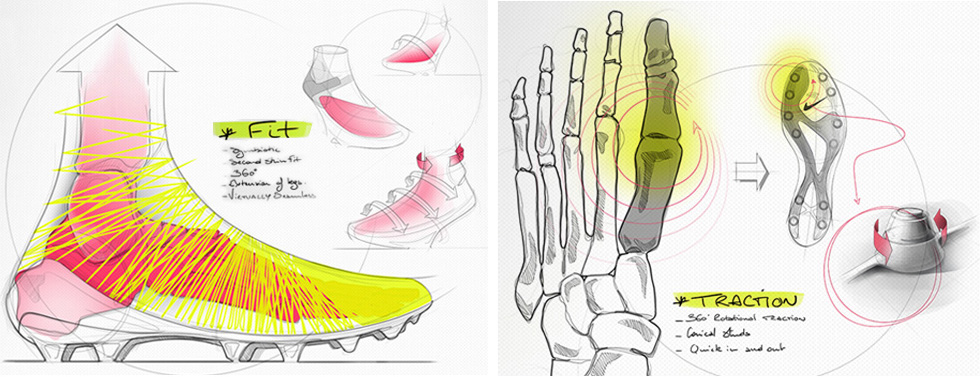
NDP: At what point did Flyknit begin to enter into the conversation?
DD: Obviously, Flyknit was around with Running, so it was the latest and greatest, and we were aware of it. But we didn't really consider Flyknit at the very beginning. Only when we kind of set out the vision of “Designing For The Body,” which we knew meant breaking the classic silhouette of a shoe. We also wanted to engineer the touch, so it needed to be something that could be soft but strong. We started narrowing down what we had in the toolbox, and Flyknit was the piece that was left in the toolbox the last, because it was the perfect one to enable this revolution.
NDP: We've seen Flyknit both in Running and in Basketball already, and what are some of the ways in which the forces of soccer are unique to how this needed to be constructed?

DD: If you look at the football players, they are 6-feet plus and strong guys; they go at high speed. You go faster on a football pitch then on a basketball court. When you cut, there's a lot of force on the side of the shoe, and that had to be considered. We have the brio cables, and on the Magista especially, it's more embedded in it.
On the Mercurial, you see it a little bit more. The brio cables are to make sure you're staying on top of the plate. If you're moving on the plate, you're losing grip on the ground and you're losing power. The other thing was, “How do you engineer the knit structure so that it's really tight? Soft, but tight and strong.” That took a lot of work. [laughs]
NDP: That's what I was going to ask. How many variations and stages did it take you to get that knit package right?
DD: We've been working on this for four years, with multiple trips around the world. I don't know the number, but over a hundred. I don't want to go back and count them one-by-one, but it's over a hundred. [laughs] Flyknit is a new thing for us, and it's a new method of make, so you're learning as you go. As designers, we've been trained to do cut & sew, and now we're doing hotmelts. It's a completely new way of thinking.
The collaboration with the technicians and those that know the best practices of knitting was essential. Every week, it was like two or three new prototypes. Then you go to see the players, and they love it. Then you go see them the next time, and they have an issue. [laughs] But that's great, because the more issues at that point, the better. You know what to solve, instead of being surprised later on.

NDP: In terms of just the general design process, in the past when shoes were more cut & sew, it was more about a pattern design with overlays and colorblocks. Here, you're doing more pixel-level detailing and fine-tuning with it being a knit construction.
DD: It's completely different, and even the way we design shoes today is completely different. In the 90's especially, it was more about finding an inspirational image that you could mimic or transform into a shoe, whether it was a car or any other object. I think today, at least in performance, it's different. It's no longer about that, and it's more about true performance.
95% of the Magista has not been stylized. The only part that's been stylized is this main line through the forefoot and around the toe. The rest of it is all function and shape driven. The texture comes from what we heard from the players, when they said they need to be able to control the ball with every area of the foot. “Ok, here's an engineered texture everywhere.” We had all kinds of different textures initially, then picked the one they preferred. Styling comes down to the main line and the branding.
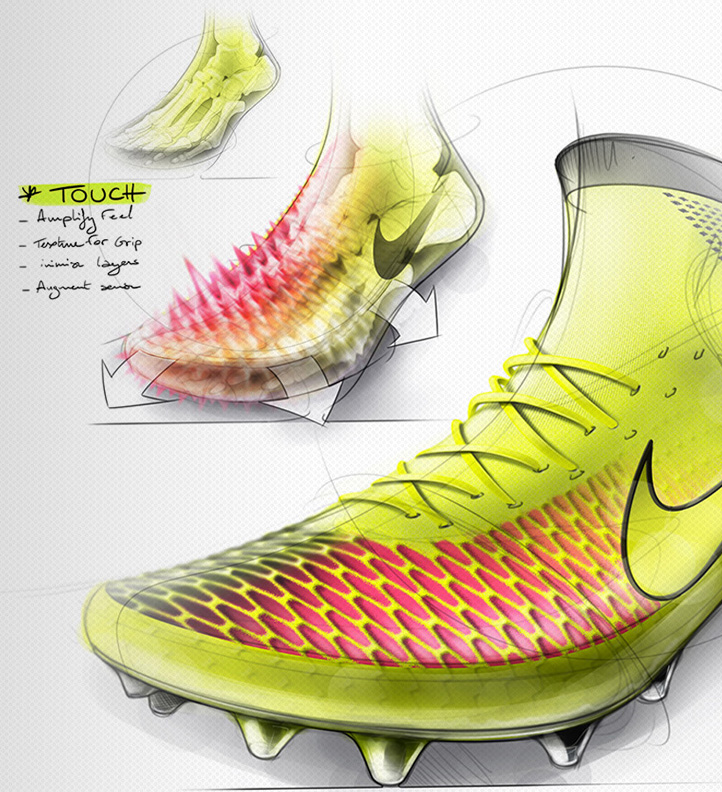
NDP: How much did the topline shift along the way, and how much were you going after a new silhouette?
DD: We were really going after this idea of “Designing For The Body,” and not so much a new silhouette at first. We knew, just like there's a reason that a glove extends past your wrist, that we were going to land on an idea of what we're calling supernatural fit.
We knew it would be different, and would be more like a sock with cleats. But, how do you do it? How do you transition out of what we've done in the past, but in a natural way. How high should it go?
Engineering a knit that has enough stretch that you can put a boot on, but also, it has compression so it feels tight. You don't want it to be stretching around your ankle.
Then, the height? If you go lower, it's kind of over your ankle, and it could create a distraction or irritation. If you go too high, you probably don't need all that material. So we wanted to find the perfect height.
NDP: You've talked about how players are bigger and faster than in the past, but what style of player did you have in mind that'd be wearing this cleat?
DD: The Magista is designed for the guy that is the visionary on the pitch. You know basketball well, and if you're controlling the ball and you have to look down, you don't have the vision of the court. It's the same in football. If you're not feeling the ball that well, and you have to look down often, then you lose the vision. The guy wearing these has the vision. He knows where the room is going to be, and his teammate better read his mind because he's going to put the ball right there.
In order to facilitate his vision, we have to enable him to look up as much as possible. We designed the Magista to enable great sensation of the ball and good grip through the textures and finishes. As he moves on the pitch, related to that vision, he's consistently looking around, so we've done a more conical and rotation-based traction too.
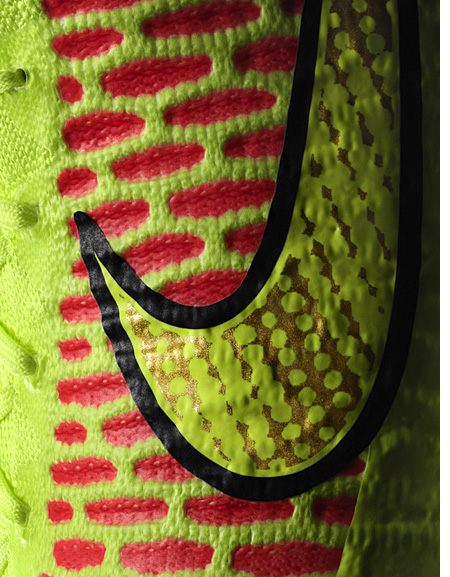 NDP: For the Flyknit on the Magista, is that material water resistant? I was seeing that there's a treatment that's been applied.
NDP: For the Flyknit on the Magista, is that material water resistant? I was seeing that there's a treatment that's been applied.
DD: Yeah. Running doesn't use any kind of treatment on top, but if you look closely here, there is a skin on top of the shoe. We did a good job hiding it, but there's a 0.1 mm TPU skin that's basically hot melted on top of the knit. That skin protects Flyknit from water, but it also enables us to put a special finish on it that we're calling ACC – All Conditions Control.
That helps to provide the same level of touch for both dry and wet conditions. Football can be played on beautiful days like this, or in really wet conditions. Even on days like this, they'll wet the pitch, to make the game faster. As a player, you don't want to have to adjust your playing style or your touch.
NDP: The Magista weighs only 7.2 ounces, and as you were speaking with all of the different players, how much were you hearing about weight? Or was it more about the touch, the fit and the feel?
DD: For us, the focus is fit, touch and traction. That's what you need when you play football. The weight can be a distraction if the boot is heavy, but if the boot is too light, you can start compromising the rest.
You can make a 100 gram boot, but you're probably going to give up something. Today, we don't have materials to not compromise protection and deliver a 100 gram boot. For some of the players, it was actually on their minds in terms of, “Don't go too light. I need a certain level of protection and support.” We didn't talk much about weight though, and it's just fit, touch and traction.
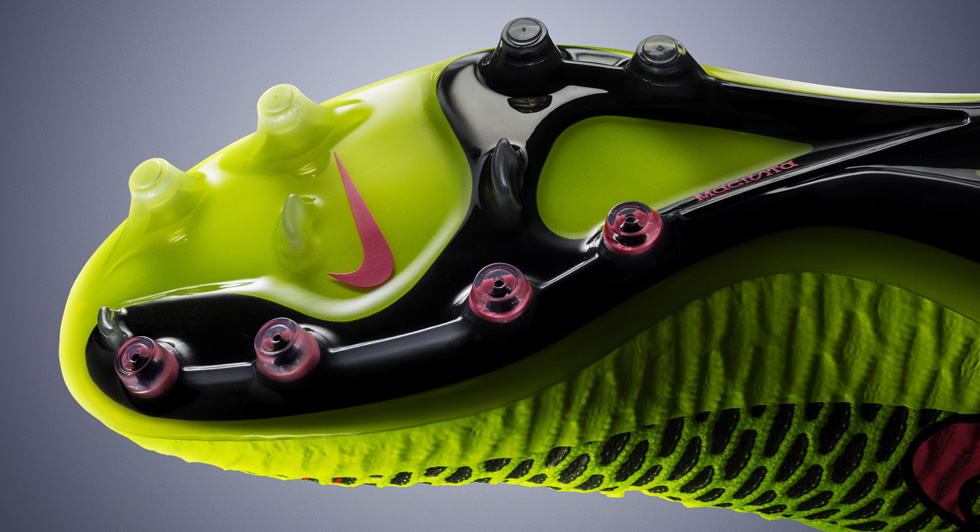
NDP: You've been doing a lot of traveling for media tours, and Mark Parker has been on those trips to help unveil the collection. What's his feedback and response been throughout this whole process? It's obviously been a huge brandwide initiative to have some statement level products here.
DD: He obviously saw different stages of these. I think everyone who's seen what we had planned in the beginning was surprised. Some people in disbelief, and others were really excited about what could be. [laughs] And he was one of the people that was a big supporter of us. We had a few key people inside of the company that kind of enabled this revolution. When you're doing something this provocative, you're going to face some challenges. You need some people to clean the road and allow you to go as fast as you can. He was a big supporter of that, and I think he's super proud that we delivered something this innovative for this.
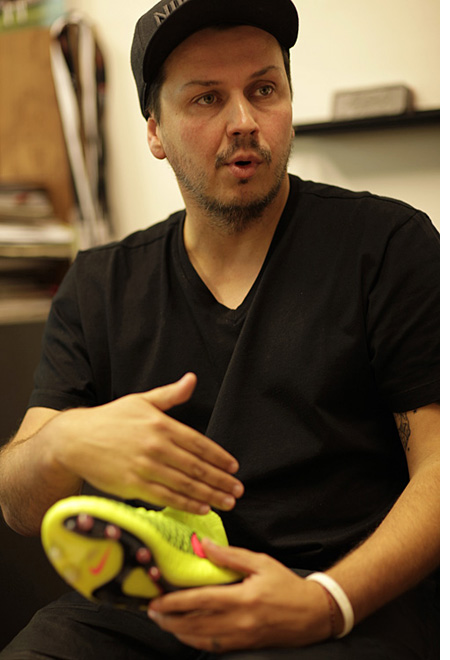
NDP: Part of what's so provocative about these is the colors. They're really loud, and not necessarily in tune with any country colors of course. Can you talk about that approach and how you landed on the colors that you have?
DD: Obviously, it's a big moment for the brand, for the players and for all of the teams. The only way to express yourself as a player is your cleats, because the rest is a uniform. So, we wanted to give players an opportunity to express themselves. The personalities are big. Some egos are big, but the personalities are definitely big. [laughs] You can see it in their haircuts, in the cars they have, the way they dress –
NDP: The castles they have.
[everybody laughs]
DD: It's great! [laughs] And you just want them to be able to express themselves, so we wanted to do something bold. It's a huge event, and it's almost like entertainment. We looked into the past, and the HyperPunch, which is this neon red-pink color, that starts from the pink Mercurial that we did in 2006.
It was very rebellious for football, to put a pink boot on the pitch and not be ridiculed for it? [laughs] We took that as one of the genes of Nike Football DNA. Then, the volt, which we consider to be Nike DNA. We use it for big events, and so we picked one from the Nike DNA, and one from Nike Football DNA, and developed the collection.
The other thing that we wanted to do is strip down the boot so that the innovation can shine. We didn't want to do graphics on the boots, like we did for the previous World Cup. Then, the last touch is the Swoosh, and the touch of gold. If you're in Brazil this summer, that's what you're playing for – to raise up that golden trophy. That inspired the touch of gold on the Swooshes.
NDP: Do you ever get guys that want to wear their own country's colors?
DD: No! No! [laughs] You don't want that, and the cleats are the only opportunity to bring yourself to the pitch, and they use it. You can see it on the way people do like to customize some words on their boots, with the names of girlfriends, kids or their beliefs.
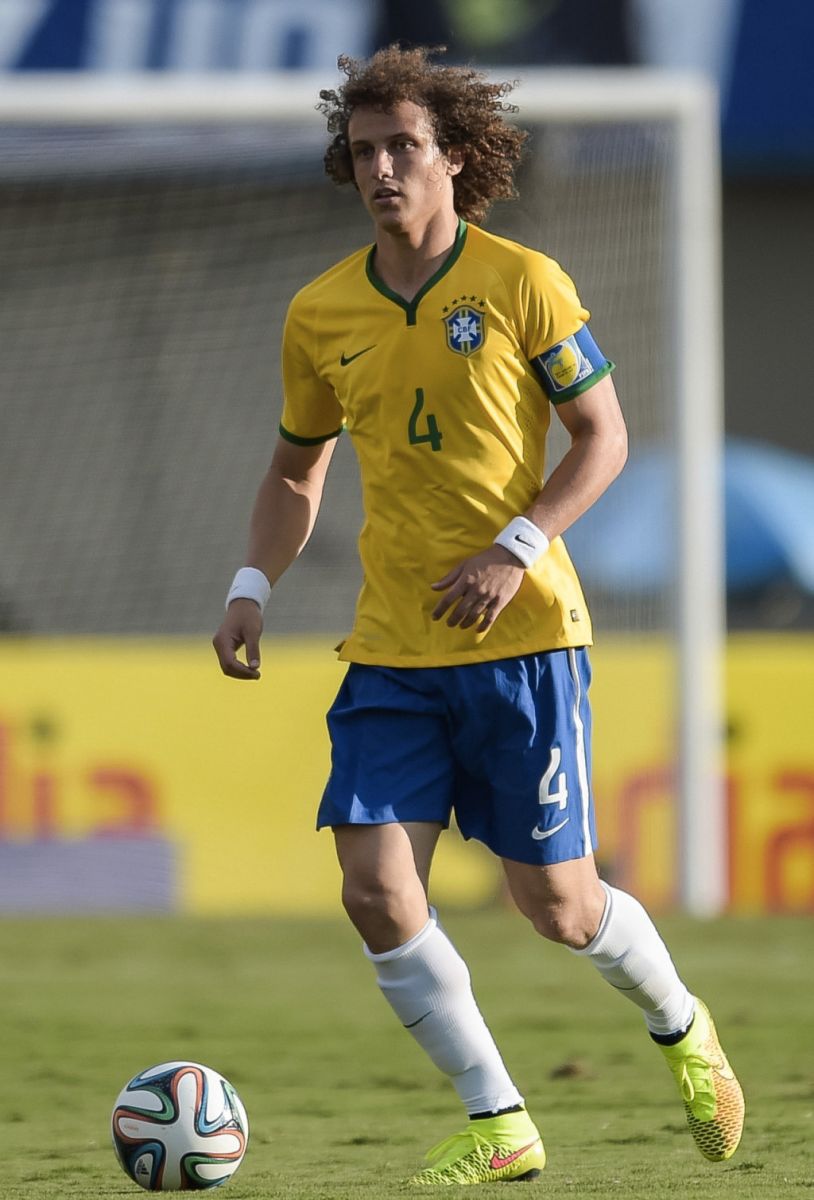 NDP: That's another thing I've always wondered, because here in the states, the NBA and NFL are so strict on rules around colors that have to match. FIFA seems to have a lot of restrictions for other stuff, but for colors, they just don't care?
NDP: That's another thing I've always wondered, because here in the states, the NBA and NFL are so strict on rules around colors that have to match. FIFA seems to have a lot of restrictions for other stuff, but for colors, they just don't care?
DD: No, there are no regulations for the boots at all. Hopefully, it will stay that way. [laughs]
NDP: I've seen that Neymar was the inspiration for the HyperVenom, but was there any specific player that you worked with for the Magista?
DD: I would say David Luiz was definitely a big motivation for us. He's a Brazilian player as well, and a huge energy giver. When he saw the boot, we were in a hotel room with probably seven or eight Brazilians, so the volume was already high. [laughs]
When he saw the boot, he's like, “I'm going to wear it tomorrow!!” This was two years ago. [laughs] Then, someone came in and told them it was team dinner time, so they all left. The guy comes back after dinner, and he wanted to look at it more.
When you meet players like that, it's fantastic. Especially when you're breaking rules. To see someone that's already connected to it, that gave us a lot of confidence. There were many players though. We tested it in Brazil, Italy, Spain, Germany, the US and England. From lower level players to the pros, and everyone was important.
NDP: And what about the playing style for the Mercurial?
DD: The Mercurial is for the fastest guy on the pitch. Everything on this boot is designed for speed. There's an offset on the last, which is a little bit lower in the heel, so that you have that tension in the ligament and in the tendon. The traction is bladed, and you have a very lightweight and responsive plate.
There's a very edited upper, so you can see the difference in texture, but you still you have a lot of lockdown with the cables. This one is more like a sports car, and you're in full control.
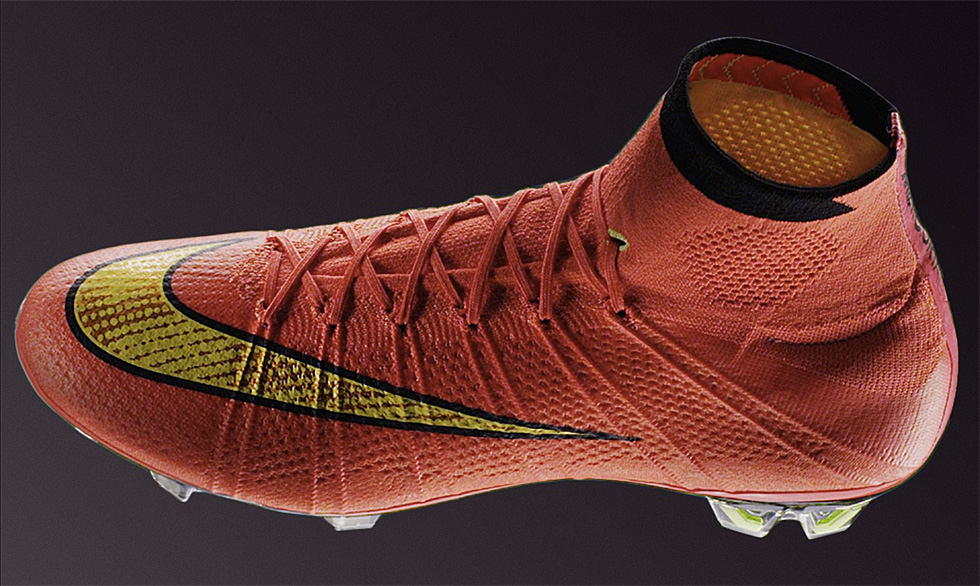
Kevin Sun: How important as a designer is it to build relationships with some of the key players as you're looking for the best insights you can get?
DD: The great thing that happens, is you build the relationships and you end up exchanging messages on Skype or WhatsApp, or you're emailing them and exchanging images. You really get so close to them, that you can absorb the energy and absorb the insights and affect the product. If you don't have the relationship with the players, it's really hard and you're just trying to please someone, and you don't really know how to please them. These relationships enable great, great work.
 KS: Is there any prediction internally within your team or for yourself personally, in terms of which team you're most rooting for?
KS: Is there any prediction internally within your team or for yourself personally, in terms of which team you're most rooting for?
DD: There are a lot of brackets going around. [laughs] I'm from Croatia, so the opening game, we will win. [laughs] Croatia plays Brazil – we'll beat them. [laughs] We're actually going to do them a favor, and it's going to be a shocker, so after that they'll start to do well. Hopefully, they can get as far as possible. You should see my emails with Neymar though, I've been teasing him.
NDP: I'm actually half-Brazilian –
DD: Doesn't matter to me. [laughs] We'll win.
NDP: So every four years all my blue, yellow and green comes out. [laughs]
DD: The great thing about Brazil, is everyone likes them. It's everyone's second team. My wife is Italian, and we speak Italian at home, so it actually for me goes Croatia, Italy and then Brazil. After this opening game, I'll be Brazilian though. [laughs]
NDP: To me, the Silver and Royal Blue Mercurial from '98 that Ronaldo wore always stuck out as a big turning point for cleat design. Are there any particular models that stick out to you that were landmark moments?
DD: You know, I think almost every Mercurial that came out is a moment. The pink one from 2006, and Ronaldo also wore the all chrome boot in 2002 when they won. The Safari Mercurial we did for CR7. The other reason I'm enjoying it this much, is the future is very bright.
We have things coming up in the next year, year and a half that are really, really exciting. We will just add to the list of those iconic moments in the future. Football is a great category to design for, because we don't launch new products every 3 months. When you launch an icon like the Mercurial, it really stays out there.
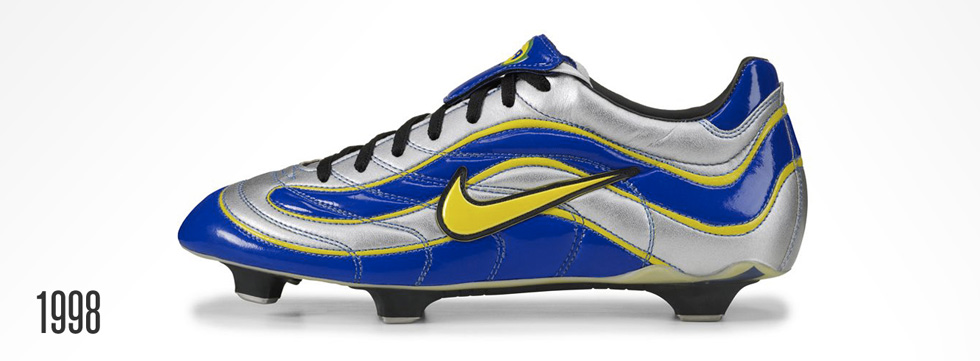
NDP: It's been said that 3.2 billion people watched the last one, and it's projected that there'll be 4 billion people watching this World Cup. What's it like as the Design Director of the category to know that you're designing for sport's biggest stage, and what's that pressure like?
DD: It's the biggest event, and it's the most global and most followed sport in the world. I don't feel the pressure from that. I don't have to be on the pitch. Even if I was, I probably still wouldn't feel that pressure. [laughs] For me, the pressure was the legacy of Nike Football. There have been so many great boots in the past, and the reason that I am here is because of the work that the designers and product teams did before me. That's very inspirational, and you want to add to that legacy. You definitely don't want to screw up, and then people are like, “Oh yeah, remember the year that he was doing it?” [laughs]
 That's the pressure that I feel, and I like to live up to my own expectations when I look back at work done before. I'm super, super happy with what we as a team accomplished. I think we didn't just deliver a great Mercurial, which historically has been our biggest model.
That's the pressure that I feel, and I like to live up to my own expectations when I look back at work done before. I'm super, super happy with what we as a team accomplished. I think we didn't just deliver a great Mercurial, which historically has been our biggest model.
We revolutionized all four silos in two years, and now, you can see the impact with the brand campaign and everything that we're doing. It's a completely different level now, so no, no pressure. [laughs]
NDP: So even though you're dealing with the biggest names in sports and designing the most visible cleats – no pressure at all. [laughs]
DD: I've always been like this, and I always tell this story lately. One day last summer, some friends of mine that are pretty successful in what they do, they came to visit me in Croatia. They looked at the house I grew up in, and my house is the last house of the neighborhood, and it's just woods behind the house.
They looked at me, and they said, “How did you make it from here to where you are now?”
I said, “You see that basket over there? I was playing with Michael Jordan every day.” [laughs] I was always like that.
Whether it was real or not, my mind was always dreaming that I could be in that world. I love products, and I played basketball growing up. The reason I started dreaming about becoming a designer was because of Jordan. I remember one day when I was a teenager, one of my teammates, he was older and an architect. One day, in the locker room, he showed me a sketch of a shoe he drew. After that moment, I never stopped designing shoes.
The Ronaldo Statue, located at the Nike World Headquarters in Beaverton, Oregon:

An early-round trial sample of a Flyknit cleat:
